Do-it-yourself siphon installation: on the bathtub, sink and sink in the kitchen. How to assemble a siphon for a sink in the kitchen and for a washbasin?
Even a novice can handle the installation of a siphon under the sink in the kitchen without resorting to the help of a specialist. The designs of modern siphons are designed for manual assembly, and only in rare cases a screwdriver may be required.
The siphon is a pipe (less often several pipes) with a bend, which serves to drain dirty water into the sewer. It is thanks to the bend that a small part of the water remains in the pipe, forming a kind of settler. He, in turn, does not allow unpleasant odors and noise from the sewer pipe to enter the room.
Siphon device
Siphons for drains are most often made of chrome-plated brass or plastic (propylene, polyethylene, PVC). Brass products oxidize over time and accumulate dirt. It is better to give preference to a plastic siphon. Such a product does not corrode, does not rot, it is wear-resistant and durable.
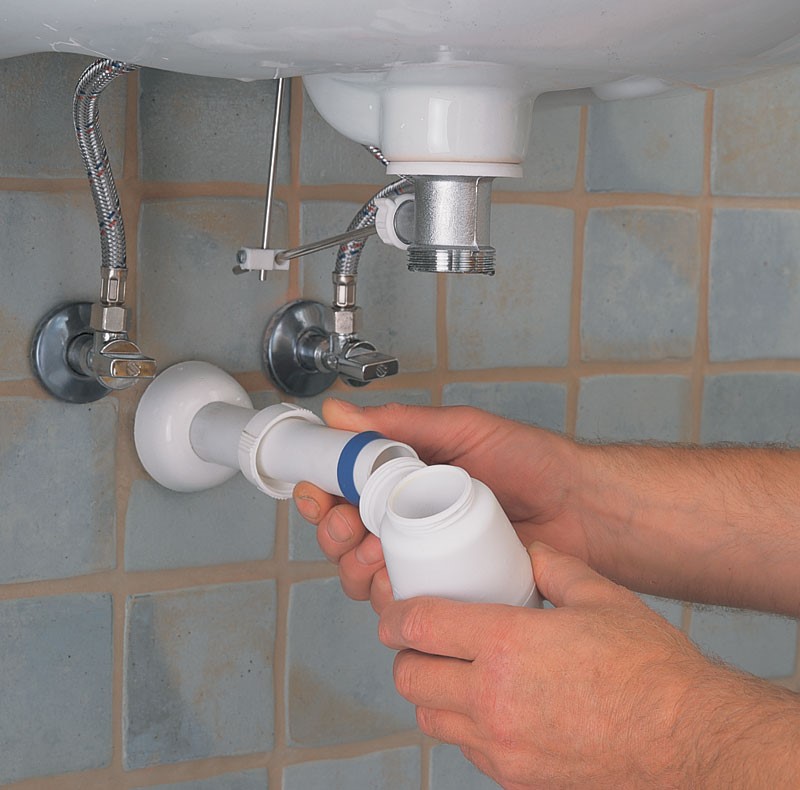
Consider the device siphon on the example of a plastic product. The standard siphon package includes:

Kitchen sink trap assembly
Each siphon purchased at a store or warehouse must be accompanied by an instruction with a product assembly diagram. The assembly will not cause difficulties even for the one who first picked up the siphon. But in order to prevent leaks in the future, the following points must be taken into account when assembling the product:
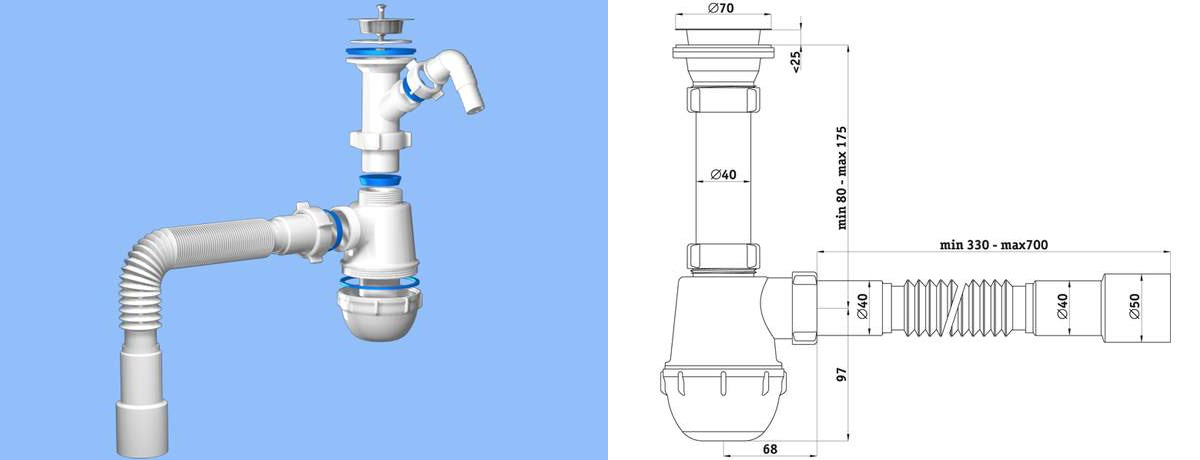

Siphon installation
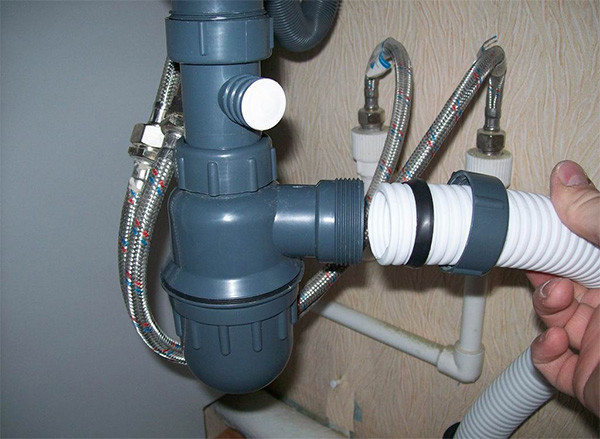
- When purchasing a siphon, it is necessary to check the product for the presence of all parts of the device. It often happens that even in unopened packaging there are not enough parts.
- When assembling the siphon, all elements must be dry and clean. Dirt or sand falling on a rubber gasket or thread can cause leaks.
- When installing a siphon, the height of the siphon outlet from the floor should be an order of magnitude higher than the height to the inlet in the sewer pipe. Under this condition, a certain slope is formed, favorable for the flow of water.
In the next article, read about: why is it needed and how to use it?
Siphon (pipe or pump in Greek) is an indispensable element of any plumbing fixture, providing drainage and preventing sewage gases from entering the room. It works on the principle of a hydraulic shutter, that is, it is a channel bent in the middle down, filled with liquid at the deflection point. A water plug isolates the indoor air from the sewer, but does not interfere with the free flow of liquid. The sink siphon differs from similar devices for the bathroom and shower tray only in that the high location of the washbasin allows you to freely choose the dimensions of the device and the volume of water in the water seal can be quite large.
Depending on the design and shape, the washbasin siphons can be divided into the following types:
- Pipe. It is a curved S or U-shaped rigid pipe, collapsible or non-collapsible. Some models have an opening stopper at the bottom for easy cleaning. Tubing require a fairly accurate combination of the drain hole of the washbasin and the inlet to the sewer.
U-shaped pipe siphon - simple drain design
- The bottle siphon for the washbasin, as the name implies, has the shape of a bottle in the part where the water seal is located. Connection to the sewerage can be made both by a direct, and a flexible pipe. Compared to the pipe, the bottle design has significant advantages: it takes up less space; easy to disassemble; objects accidentally caught in the drain are not lost, remaining at the bottom of the flask. Among the disadvantages, one can name a large tendency to accumulation of contaminants in the place where the stream exits from the glass to a straight section. The bottle type is most widely used due to the ease of maintenance.
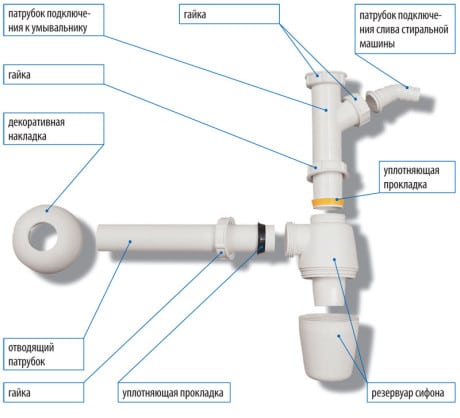
Bottle siphons are the most complex in design, but the most convenient to maintain
- Corrugated - universal design, is just a flexible tube. It can be bent in any configuration, which allows you to connect the washbasins to the entrances to the sewer system, which are not standard. In addition, corrugated siphons are cheap and very easy to install. The slope to create a water plug is formed manually by bending the tube. Disadvantages: uneven corrugated surface has a tendency to accumulate deposits, the pipe is not separable. On the other hand, there are no intermediates - less likely to leak.
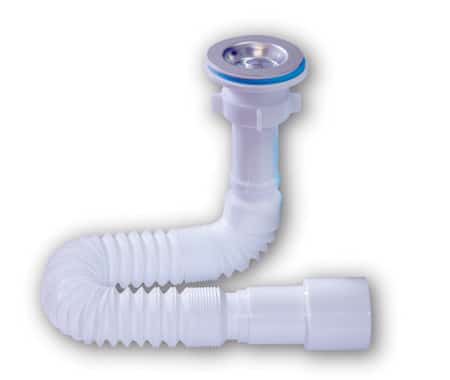
The corrugated siphon is cheap, easy to install, but has many disadvantages
- Hidden siphons are a variant of the bottle design, where only a horizontal pipe is located outside, and the bottle (glass) is built into the wall. Rarely used and expensive type.

Additional functions
Plums can be supplemented with the following functions and elements:
- On the washbasin with the second, upper outlet, a siphon is installed for the sink with overflow. Such a system prevents accidental flooding. In sinks, the overflow is usually located in a ceramic structure and goes directly into the outlet; in the kitchen sinks it goes with an external pipe to the siphon.
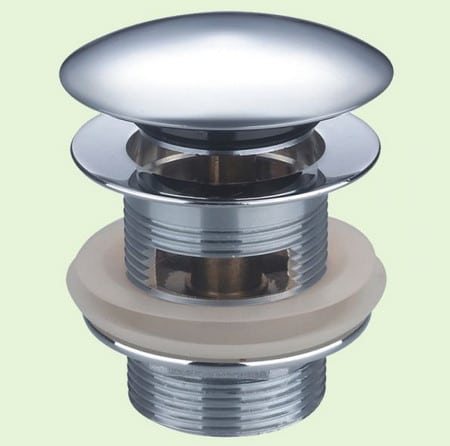

- An additional side entrance is equipped with siphons designed to drain both from the wash basin and from the washing machine. A tap is installed between the neck of the sink and the water seal.
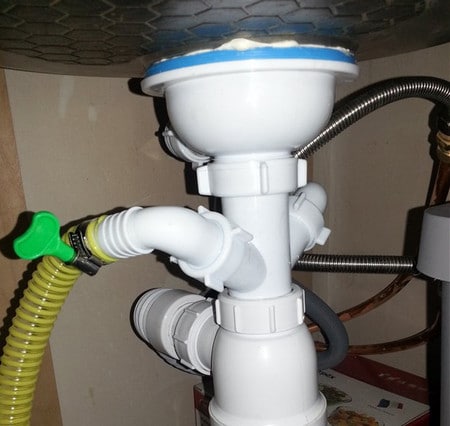
Both the overflow and the input for the washing machine are integrated only in bottle siphons.
Siphon for washing
It is structurally similar to a washbasin drain except that the sink neck has a larger diameter and the distance from its center to the wall is also noticeably larger. In addition, sinks often have two, sometimes three sections. Of these, one will be flat, for vegetables, and two of a full depth, with an overflow (overflow). Plus an extra drain for the dishwasher. Thus, the siphon for a kitchen sink can be either very simple, single, or very complex, combining up to six drain flows.

Siphons for kitchen sinks with several bowls have a rather complicated shape
Issue: bundled or separately
The outlet, which is placed on the drain neck and connected to the main part of the siphon, may be included in its kit. Established issues are simple budget clips with grilles. More aesthetic and expensive are purchased separately. Outlets with an adjustable valve covering the drain hole are usually included in the mixer. Quality kitchen sinks are always sold along with the releases.

Outlets can be equipped with simple grilles or bottom valves. Pressure valves have become increasingly popular lately
Materials: plastic or metal
Siphons, depending on the material from which they are made, are divided into two types: plastic and metal.
- Plastic The cheapest siphons are polyethylene, as a rule, they have a simple design, mainly a pipe, a small number of connections. But more often polypropylene is used, the details of it are more rigid, hold their shape better, more reliable connection. Polymeric siphons of complex configuration are made of this plastic. To connect washing machines, the drain of which may have a high temperature, it is also recommended to use polypropylene, it is less susceptible to thermal expansion. After the operation of the washing machine in boiling mode, the siphon often starts to leak, it is necessary to tighten all threaded connections.

An assortment of inexpensive polypropylene siphons, mainly bottle designs
- Metal siphons for sinks and sinks. They are more expensive than polymer, their service life is higher. More commonly used copper alloys: brass and bronze. Alloys do not corrode, but are oxidized; galvanic coating is applied to them from the outside. Siphons are also made of stainless steel, but the cost of such products is quite high, so they are not widespread.

Designer chrome-plated siphons are just as beautiful, so cheap
All connections, threaded or crimped, are sealed with soft rubber or rubber-polymer gaskets.
How to choose the right siphon
When choosing a siphon, the following factors are taken into account:
- Neck diameter. Washbasins and sinks are different.
- The presence of overflow.
- The need to have an additional drain for a washing machine or dishwasher.
- The distance from the neck to the exit of the sewer from the wall in horizontal projection. As a rule, a straight pipe section is enough in length, but there are exceptions.

Washbasin connection scheme, suitable in the vast majority of cases. The standard for the height of the sewer entrance to the wall for the washbasin is considered to be 520-550 mm, the kitchen sink - 300-450 mm, if there is a chopper no higher than 400 mm
- Availability of release, often they are included in the set of sinks and faucets.
- Is the sewer outlet located opposite the siphon. If it is offset by more than 2-4 cm, it is better to prefer a bottle siphon with a flexible pipe or a corrugated pipe.
- Diameter of the entrance to the sewer. It can be different: 35, 40 and 50 mm. It is desirable that the diameter of the siphon inlet tube matches this value. It may be smaller, in which case an adapter is required. But no more.
- Aesthetic preferences. In the washbasin with a pedestal, the siphon is practically invisible and its appearance does not play any significance. A chrome-plated siphon for a sink without a pedestal would be more appropriate. For designer plumbing, you have to fork out for the corresponding fittings.
- Price. In all honesty, there is not much difference between cheap and expensive siphons in terms of operation. The drain will be effectively carried out both through cheap siphons Orio-plastic and Ani-plast, and through elite devices worth hundreds of euros. Of course, metal will last longer, but for plastic we are talking about several tens of years. If you need a chrome plated, but relatively inexpensive drain, you should pay attention to the German Viega siphons, in the company's catalog there are quite decent budget models. Ease of use is more dependent on the design (easier to maintain bottle) and release (the presence of a valve, if necessary).
Video instruction for assembling a washbasin siphon
Installing a siphon is a simple matter. Having basic plumbing skills, it is not difficult to assemble it. If the “home master” is not your calling, it would be more correct to entrust all special works to professionals.
Modern kitchens are unthinkable without a sink. This simple plumbing fixture consists of a bowl where the drain for the kitchen sink is located, and a siphon to which sewer pipes are connected. This design protects the kitchen from sewage odors and germs abounding in drainage waters.
The siphon itself is a pipe bend that traps water and small particles drained into the sink. In fact, it is a sedimentation tank, and the liquid accumulated in it, which serves as a kind of cork, protects from "aromas" and the spread of bacteria.

Structural varieties of siphons
Siphons can take several varieties. Most popular:
- bottle;
- knee
- corrugated;
- flat;
- hidden.
Bottle or flask siphons are the most common. They are made in the form of a prefabricated structure, which facilitates installation and allows not only to protect the room from smells, but also without special difficulties to remove fallen jewelry or valuable small items from a siphon glass.

Knee siphons are simpler options, they are a curved pipe. The bend can take the form of the letter U or S. This allows you to better save space, which is especially true in miniature rooms.

The corrugated variety of siphons does not differ in design from the pipe version, however, a corrugated hose is used here. This allows it to bend in any direction, which is the main advantage. There is one significant drawback with this method of connecting the sink to the sewer system: the corrugation is quickly clogged, it often has to be taken apart and cleaned.

Flat siphons for sinks are used in cases where there is very little space in the kitchen. All of its elements are placed horizontally, in the form of the letter P. This model is often used in double-sink sinks.

Hidden are siphons that are built into the wall or any other structures that hide communication from the eyes. This is especially useful in miniature kitchens so communication devices do not spoil the whole view.
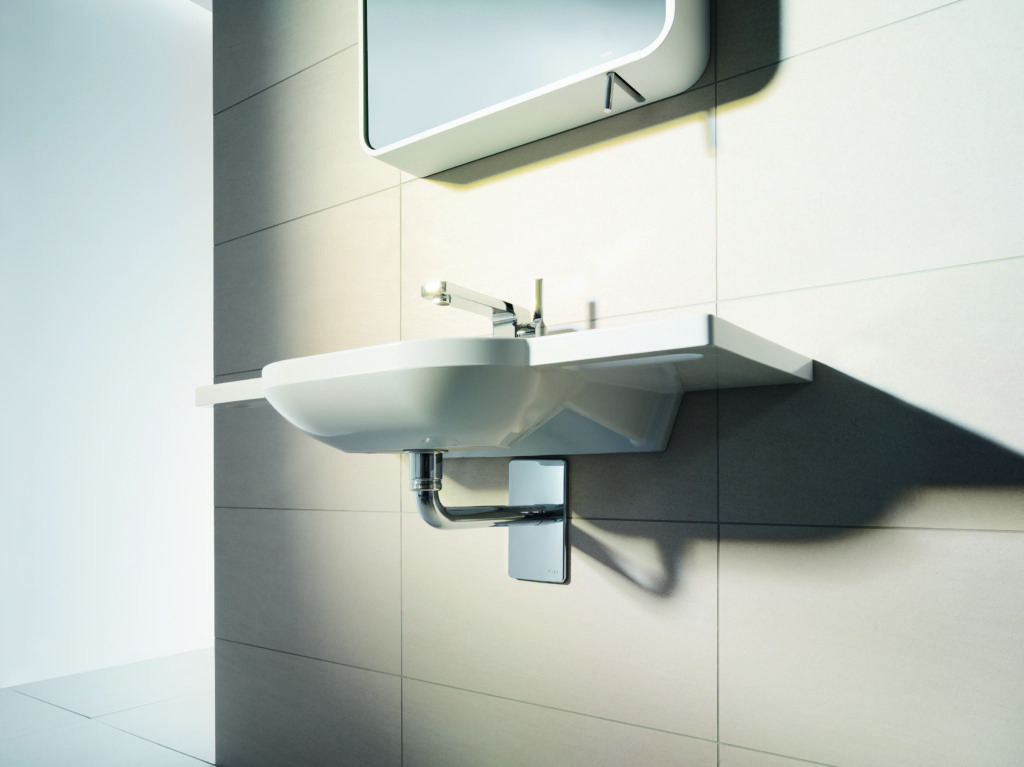
These types of siphons can have overflow - a tube to protect against flooding if the siphon glass is clogged - and additional pipes for connecting household appliances, such as washing machines and dishwashers.
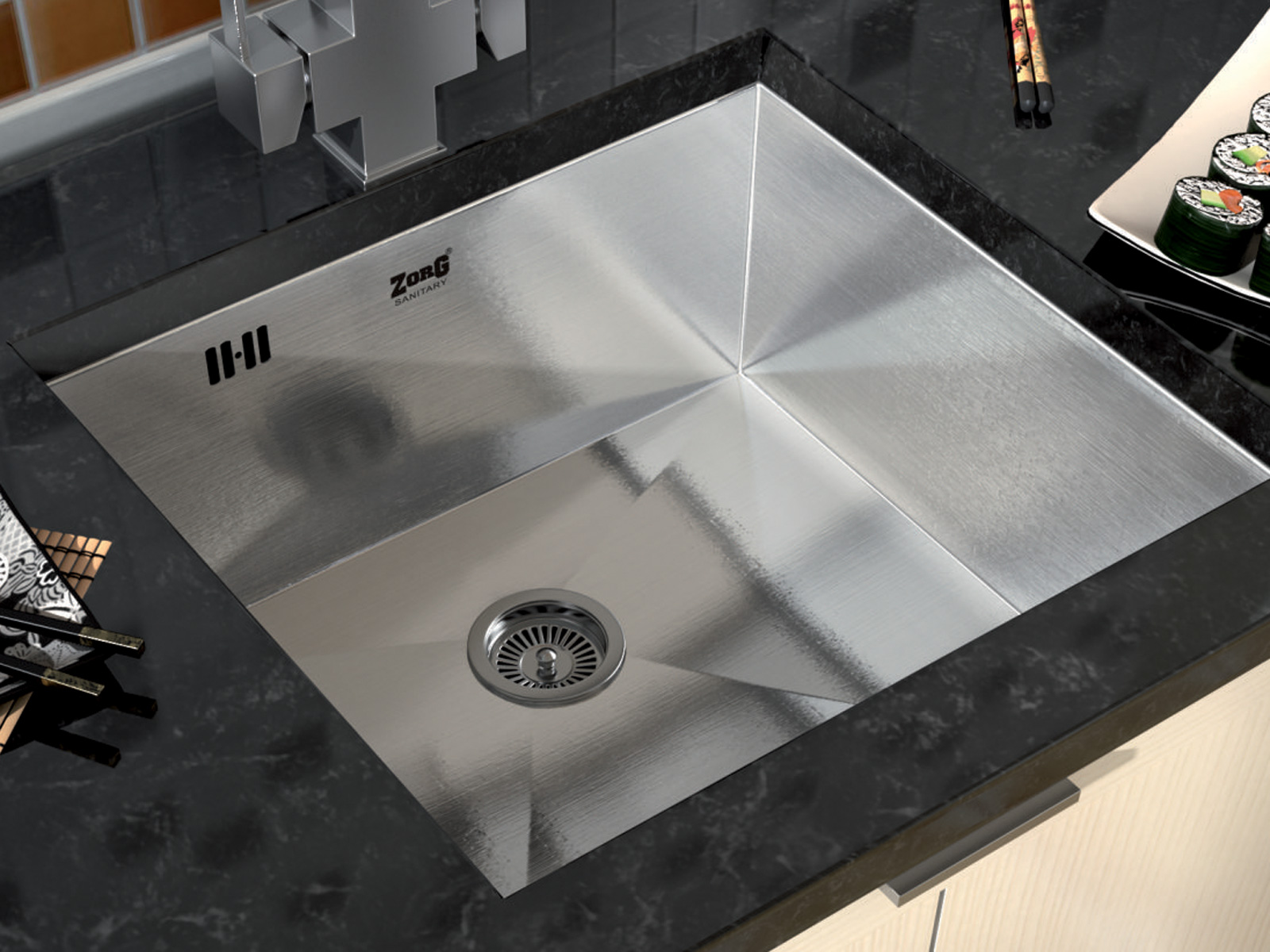
Materials of manufacture
Siphons for kitchen sinks can be made from various materials. Most commonly used:
- Plastic - polymer, polypropylene or polyethylene products that are not subject to corrosion and do not accumulate grease and dirt on the walls;
- Metal - brass, bronze, copper, steel products.

It is preferable to use plastic siphons, as they certainly will not decay and will not wear out for a long time. Polymeric materials contribute to better patency of substances washed in the sink, the fat will not stick to them, it will leave with water. Metal products are preferable in cases where their use requires a certain interior design. The use of non-ferrous metals avoids rust, however, oxidation in them will still occur, so frequent congestion will inevitably begin after a certain period of time after installation.

Siphon Composition
The bulb-shaped version consists of the following parts:
- collapsible case;
- outlet pipe - it is he who connects to the drain hole of the sink;
- wire mesh;
- screw for connecting the mesh and the nozzle;
- drainage of liquid to the sewer pipe;
- various types of gaskets, sealing all components;
- union plastic nuts for fastening nozzles.
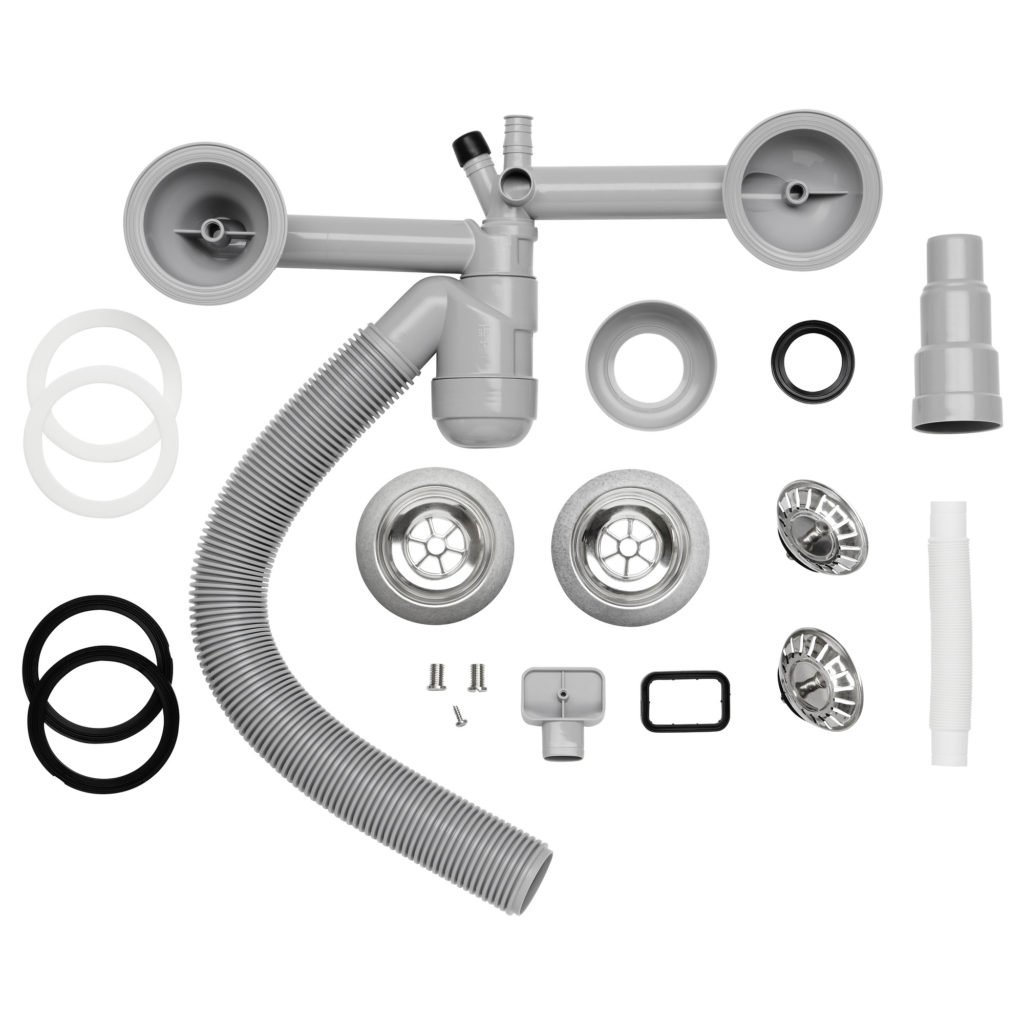
Siphon installation
Mounting the siphon structure is a fairly simple process, so even those who have not had any plumbing work before can handle it. The main thing is to follow the instructions that are often attached to the drain hole devices.
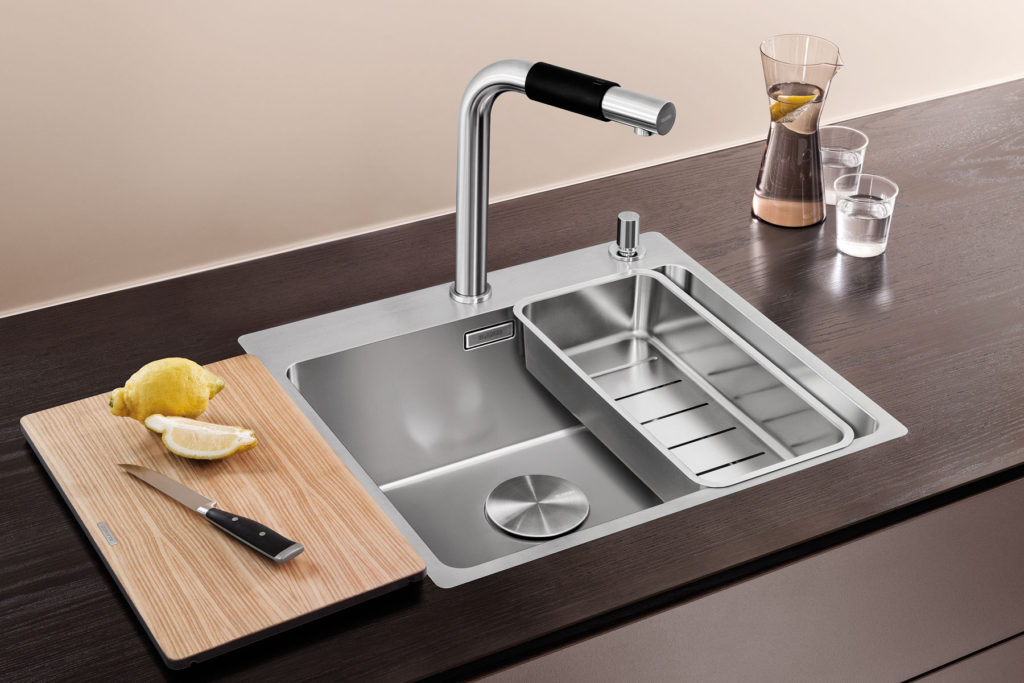
The bottle type is installed in the following sequence:
- first, on the upper part of the siphon case, where the external thread is located, a large thin gasket is inserted to seal the bottom cover;
- the bottom cover is now screwed;
- the nozzle attached to the sink is equipped with a union nut;
- a cone-shaped washer is put on the lower part of the nozzle with a nut, which will regulate the height of the siphon structure under the sink;
- the nozzle is connected to the cone, and the nut is twisted;
- the outlet is connected to the drain pipe: first, a plastic nut is put on the pipe, and then a cone-shaped gasket is pushed, after which the hose pipe is connected to the body and secured with a nut.
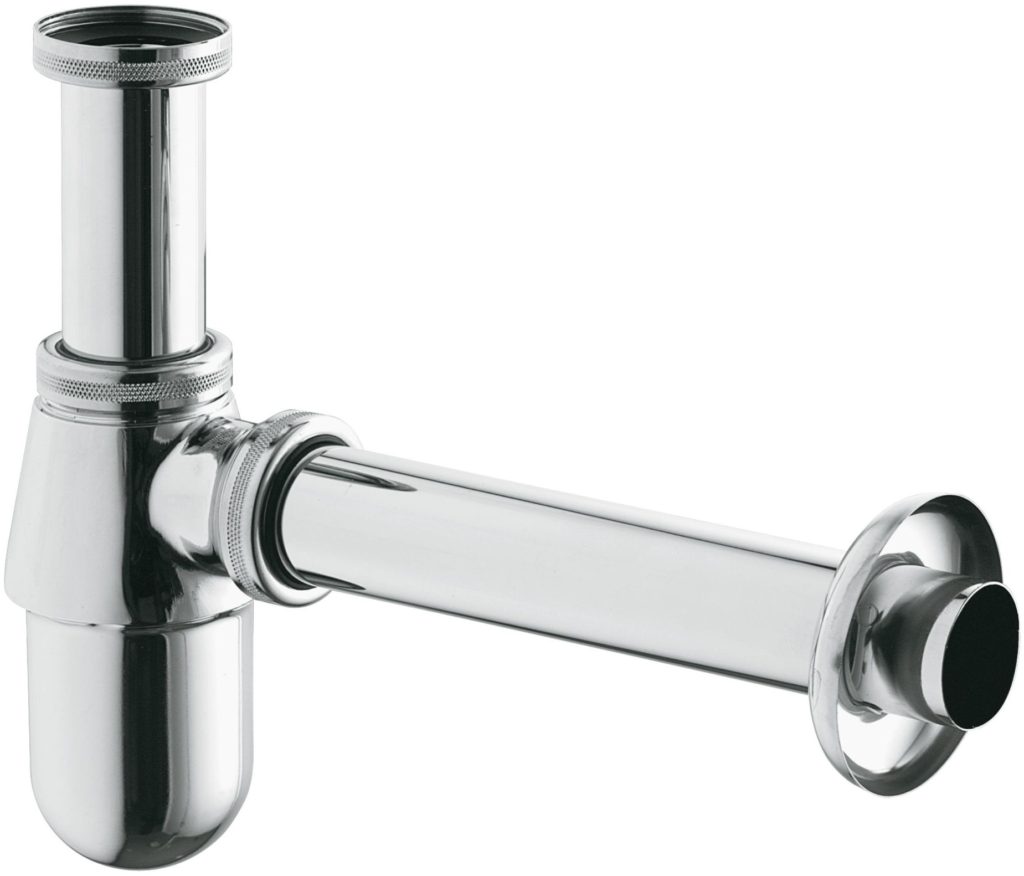
By these actions a siphon was collected. Now it must be connected to the sink. This process is also not difficult.
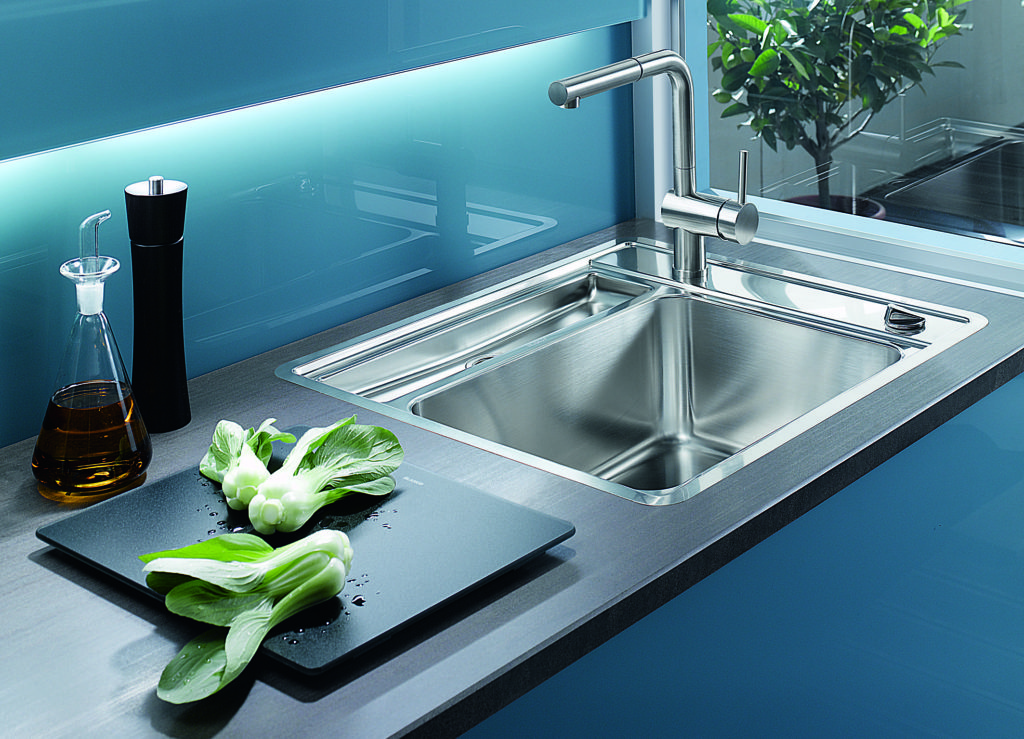
First you need to check whether the device is suitable for size, then you need to prepare the sewer pipe. Regardless of whether it is plastic or metal, you must first connect a rubber gasket to it.

Now the grid is installed on the drain hole of the sink. Then, also using a gasket from below, the siphon itself is screwed onto the sink with a screw, after which the drain hose of the device is connected to the sewer. In the final stage, verification is carried out. To do this, turn on the water and see if there are any leaks anywhere. By pulling certain elements of the siphon structure, you can eliminate the leak. If water runs between the sink and the siphon, you need to fix the gasket between them, which, obviously, is installed with a warp.
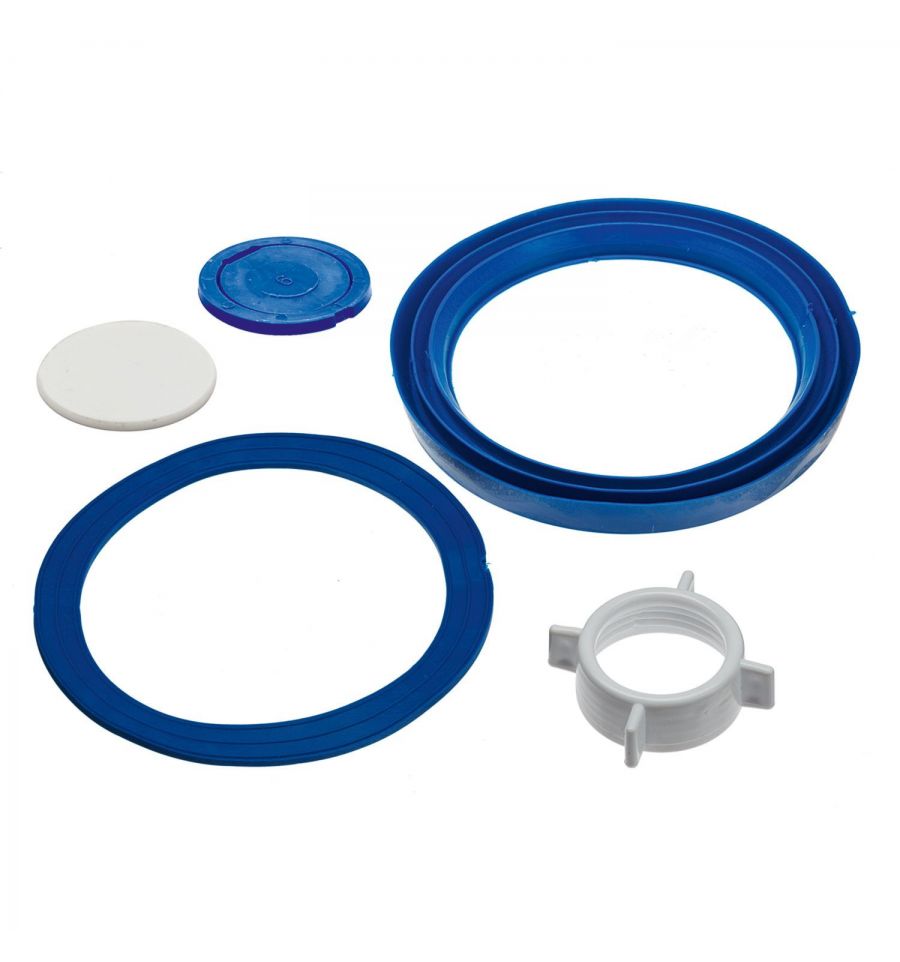
Siphon installation with overflow
To install the structure with overflow, you need to perform several additional steps. The lower part of the overflow pipe must be connected to the branch pipe, and this is done at the time of connection with the sink of the siphon design. Now the top of the tube needs to be attached to the overflow hole in the sink. As you can see, the action does not take much time and does not contain any difficulties. Now, if the sink is filled with excess water, the liquid will go into the siphon not only through the drain, but also through the overflow hole.
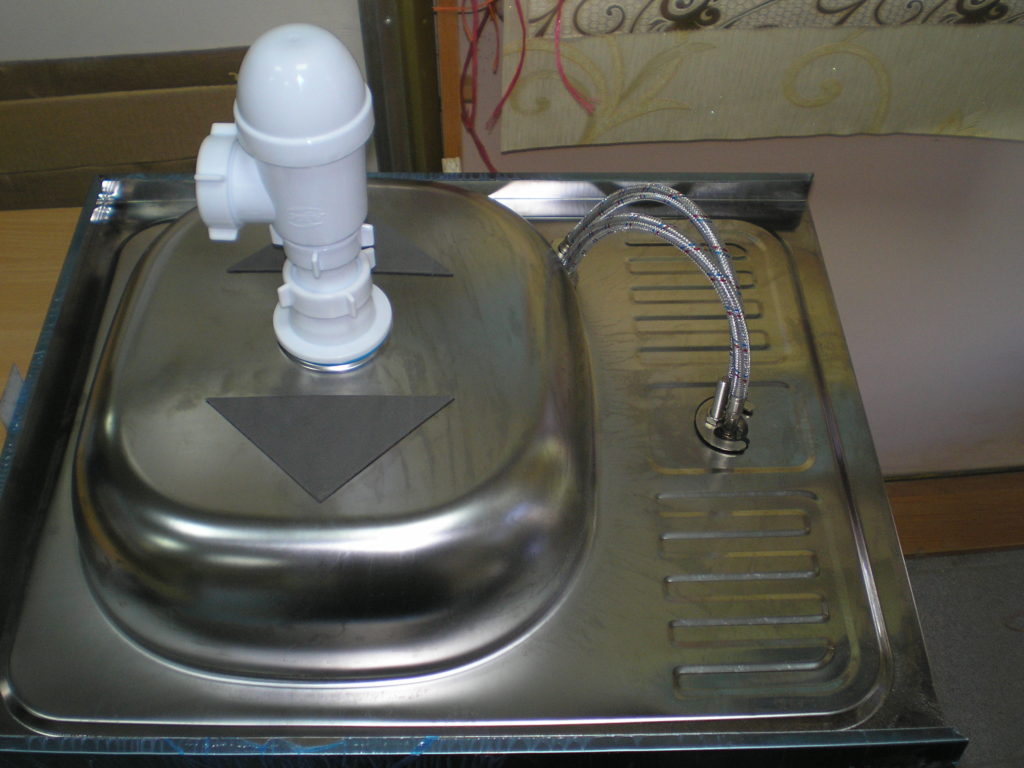
Installation with adapter sleeve
Some sink designs require large siphons. In order to connect a larger siphon design to a smaller sewer, a transition sleeve can be used. It is connected either to the drain, or as a transition to the pipe. There is no need to use more than one, even if it is present in the configuration. Thanks to this device, a siphon with a pipe diameter of forty millimeters can be connected to a pipe with a diameter of thirty-two millimeters.

Additional installation features:
- Flask-shaped discharge should be collected according to the instructions given.
- If a corrugated outlet pipe is used, it must be connected to the siphon before it is connected to the sink. This rule does not apply in the case of a rigid pipe.
- If the outlet tube is already integrated in the flask in a bulb-shaped siphon structure, then it will be much easier to mount it.
- The simplest installation is for a corrugated version of the siphon with two rigid pipe ends. The flexible design allows you to bend it as required, secure it with clamps and lead it down the drain.
- To prevent a flood when checking in the kitchen, a bowl or bucket should be placed under the entire siphon installation.

Tips for choosing and installing siphons:
- smooth-walled systems are most easy to clean;
- so that during all installation work the kitchen is not filled with sewage odors, it is recommended to plug the remaining open pipe with a rag or cork;
- before screwing the siphon to the sink, thoroughly clean and degrease the area around the drain;
- rubber gaskets must be additionally sealed, all other joints, except the bottom cover, should be subjected to the same procedure, since it will have to be unscrewed periodically to clean and pull out washed-out small objects, for example, rings or earrings, buttons and similar trifles;
- so that the bottom siphon cover does not leak, it can be plugged with tow;
- the siphon hole should ideally correspond in size to the diameter of the sewer;
- in case this is difficult, there are siphon installations with a universal stepped drain or transition sleeve, and the first option is preferable;
- it is not necessary to purchase a drainage device at the same time as a sink, it can be done separately, as long as all the parts correspond to each other in size and design;
- the sink and its equipment should primarily focus on the purpose for which they are purchased;
- for example, there are sinks with two drain systems, they are necessary in the case when you have to pour a large amount of water in the kitchen, for example, when washing dishes; this option is also very easy to install, the components are simply connected by a tube.
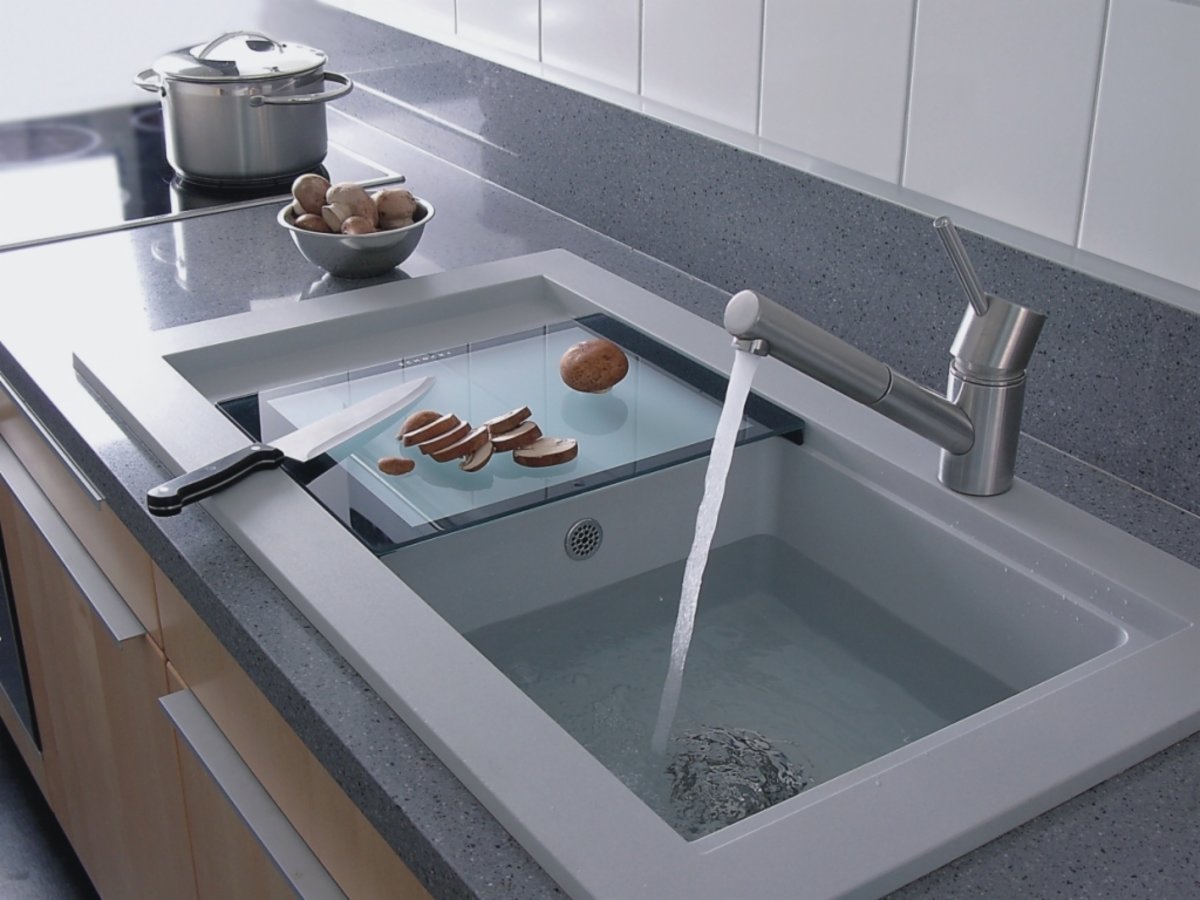
If there are too many questions left when studying possible installation options for a sink in the kitchen, especially with an overflow and transitional cuffs, you can consult with plumbing specialists to surely avoid possible leaks of the entire sewer device and to ensure its proper functioning.
Installing a siphon in the kitchen
No related articles.
A plumbing siphon is a connecting element between the sewer and a kitchen sink, sink or bathtub, as well as some types of household appliances (washing machine or dishwasher). In addition to drainage from a bathtub or a sink, a sanitary lock performs a sanitary function: preventing unpleasant odors from entering the apartment from the sewer opening due to its design, in which a valve is formed from water.
Despite the fact that the single design feature of the siphon is the curvature of its tube, the intended purpose distinguishes water locks for the bathroom, shower, washbasin, kitchen sink, as well as for dishwashers and washing machines. A more extensive classification of hydraulic locks will allow you to choose the right one for arranging a bathroom, kitchen or shower. Moreover, they are classified according to the following criteria:
- Device design
- Trumpet
It is a construction made of a pipe, bent U- or S-shaped, bending creates a water lock. The upper part of the siphon is attached to the sink (bath) with a special bolt, the lower part connects it to the sewer hole. The middle part, which accounts for the bend, is usually removable for easy cleaning of the water seal. The pipe type is most often mounted in the bathroom. The advantages of this type are its aesthetic appearance and functionality, but the tube has insufficient bending so that the water does not evaporate for a long time, so if the device is not used for a long time, the obstruction to unpleasant odors disappears. Another disadvantage of the pipe siphon is the need for accurate calculation of the distance between the drain hole of the sink and the sewer during installation.
- Corrugated
Water trap made of plastic corrugated hose. Easy to install, allows you to mount a water drain regardless of the free space under the sink. The drain is insured against leaks, since the corrugated tube has only one connecting node. The disadvantage is the fragility of the siphon material, as well as the undesirability of use for a kitchen sink, since the walls of the corrugated hose will collect a lot of grease and dirt. 
- Bottle
This type is most often used for sinks and washbasins. It consists of a rigid structure in the form of a flask or bottle equipped with an overflow, thanks to which the water does not rise above a certain border. The bottle design reliably holds odors, is easy to clean, has a long service life and ease of installation. 

- Production material
Siphons are made of metal (brass, copper, bronze) and plastic. The metal siphon is of great aesthetic value, especially when installed in open washbasins for bathrooms. Such siphons are very practical, but require special care and have a high cost. Therefore, plastic is the most common material for connecting devices due to its ease of installation and maintenance, affordable price, light weight, and convenient design.
- Features of work
- Manual siphons equipped with a separate drain plug;
- Semi-automatic with odor-locking device;
- Automatic with a handle to open the cork or a lid that closes and opens with one click.
- Additional functions
Bathtubs and sinks can be equipped with additional devices for protection against overflow with water, called the overflow system, as well as bends for the possibility of simultaneously connecting several items of plumbing or household appliances. Hidden siphons can also be used, which can be decorated in accordance with the interior of the kitchen or bath. 
DIY siphon installation
The installation of a sanitary siphon on the washbasin, in the kitchen, or in the bathroom has practically no differences. In this case, there is no need to resort to the help of specialists, the installation of the siphon is quite simple to do with your own hands. Before proceeding with the installation, you should use the following tips:
- Be sure to check the availability of a complete set when buying a device and study the attached instructions for its assembly;
- All components must be dry and clean to prevent leaks due to dirt and sand falling on the thread or gasket;
- When mounting the siphon on a bathtub made of acrylic or steel, it is recommended to process the drain hole with sandpaper to better fit the gaskets;
- When tightening the siphon, it is necessary to monitor the rigid fixation of the gaskets;
- Before buying a siphon, it is necessary to measure the diameter of the drain hole, which should be at least 5 cm, the distance between the sewer pipe and the sink, as well as the diameter of the sewer hole. The more devices it is planned to connect to the siphon, the larger should be its size and the number of taps;
Siphon assembly process for further installation in the bath. Before installation, caps are removed from the drain holes. After mounting the corrugated tube, the drain grilles with thick o-rings are inserted into place.
A siphon tube with a smaller diameter than the sewer hole can be connected using an adapter, which cannot be done with a larger diameter.
- The selection of the siphon should be made taking into account the purpose and installation features: if the location of the sewer hole deviates from the drain at the sink in one direction or another, you should choose a corrugated or bottle device, and install a flat siphon only in the shower, but not in the kitchen.
Kitchen installation
Before self-installation of a water lock, you will need to dismantle the old siphon, which must be removed along with the sewer connection. The drain and socket should be cleaned of dirt, and the sewer pipe temporarily plugged with a bag or cloth.
The kitchen siphon must be assembled by hand to control the degree of pressure and to avoid damage to it with a tool.
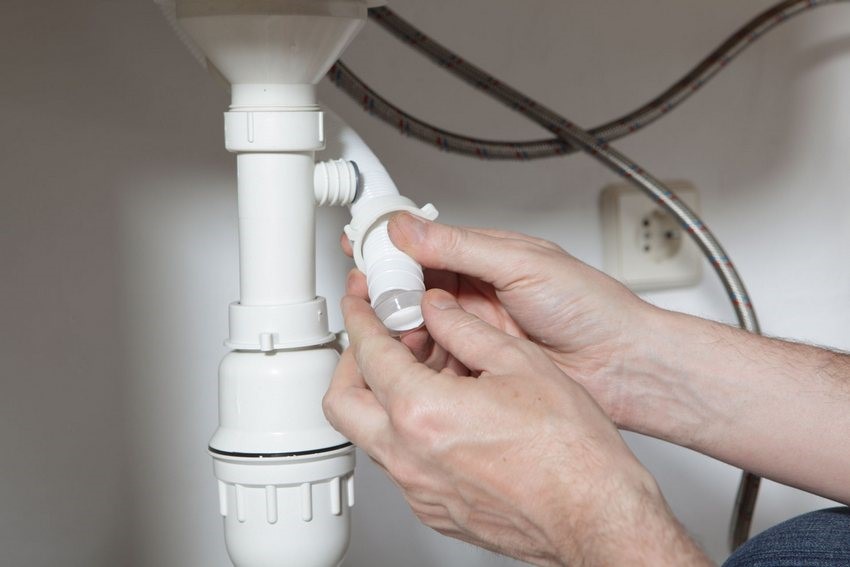
A sealant is applied to the rubber gaskets, which should be fixed immediately in order to avoid displacement, which could lead to further leakage.
Bathroom installation
Before installing a water trap under the bath, it is necessary to check the tightness of the sewer pipe connection, the condition of the gaskets and rubber seals. If the gaskets are damaged, they should be replaced with new ones. 
The installation procedure is as follows:
- Installation of a corrugated overflow system. If the overflow pipe is rigid, this will require a more careful fit;
- The grate of the drain hole of the bath and the siphon intake pipe are installed. Their fastening should be carried out on a cleaned surface, which, if necessary, can be processed mechanically or chemically;
- The flange of the intake pipe is treated with sealant, then a rubber gasket is laid on it. A layer of sealant is also applied to the gasket, and, without waiting for it to dry, the pipe must be attached to the bottom of the bath;
- The corrugated pipe, assembled in accordance with the instructions, with gaskets and nuts, is mounted in the hole in which the overflow pipe and the receiving part of the siphon are connected;
The process of installing a corrugated siphon on the sink in the bathroom. Inside the sink, a grill is installed on the gasket with sealant. A pipe using rubber seals is connected from the bottom.
At this stage of the work, it is important that the cone gaskets are positioned correctly in strict accordance with the scheme, otherwise there will be no tightness of the joints.

Washbasin installation
To install a water lock on the washbasin in the bathroom, any type is suitable - bottle, corrugated, pipe. Often a siphon is installed with a drain-overflow system and with additional taps for connecting the washing machine.
When installing the siphon under the washbasin, it is necessary to minimize the number of horizontal sections in order to avoid their further sagging.
The installation process is similar to a kitchen sink installation.
 First, the device is tried on under the sink, adjusting if necessary its details. A rubber washer-seal is superimposed on the inlet pipe close to the limiter. It is inserted from the bottom of the washbasin, while the pipe must be in an upright position.
First, the device is tried on under the sink, adjusting if necessary its details. A rubber washer-seal is superimposed on the inlet pipe close to the limiter. It is inserted from the bottom of the washbasin, while the pipe must be in an upright position.
From the inside of the sink, a blockage grid with a gasket is put on, fixed with a screw.
The sewer hole, into which the siphon tube is firmly inserted, is pre-sealed with a transition sleeve made of rubber.
A fixing nut is put on the inlet on the washbasin, then a gasket, and then a siphon with a water seal is mounted. When all the elements are installed, it is necessary to check the operability of the system, if necessary, tighten the threaded connections and seals.
Thus, the siphon performs connecting and sanitary functions, preventing the infiltration of unpleasant odors from the sewer opening into the apartment. The variety of types of this device makes it easy to decide on the right one for a bath, sink, kitchen sink, and for connecting household appliances. The installation of the siphon is quite simple, it can be done without the help of a specialist, following the instructions that come with each device.
The siphon has the shape of a curved tube with elbows of different lengths. Liquid flows into the lower level tank through the “tube” to a lower level tank, and the upper cutting area is much higher than the liquid level of the upper tank. The siphon device is more or less clear, now we need to figure out what functions this interesting device performs.
First of all, the siphon serves to provide the outlet to the amount of water that was passed by the plumbing device, otherwise it would have to live forever in the “repair stage” of your or neighboring apartment. But, why, then, should the water pass through the bends of the device, and not fall directly into the sewer? The answer to this question is the definition of the second function of the siphon, namely, to create a water lock, which is an insurmountable obstacle for sewer odors to go outside - a toilet, a bathroom, a kitchen.
Siphons come in a wide variety of forms, but depending on where they are installed, siphons can be divided into several groups:
Siphons for the sink,
for Bath,
for a shower cabin ("gangway"),
bathroom,
a washing machine
for the kitchen (sink, dishwasher),
for the garage.
There are several types of sink siphons: bottle, pipe, corrugated.
Bottle siphons are the most commonly used siphons. And there are reasons for this: the design features of the siphon allow you to create an excellent water plug; since the bottle is never completely empty, some valuable items (for example, a ring) that accidentally fall into the device remain at the bottom of the “bottle”. But do not forget about regular cleaning of the siphon, as dirt deposits may accumulate at the bottom of the bottle over time.
 Tubular siphons are a construction of a bent “U” or “S” shaped pipe. At the bottom of the siphon there is a special hole for easier cleaning it from all kinds of mechanical particles.
Tubular siphons are a construction of a bent “U” or “S” shaped pipe. At the bottom of the siphon there is a special hole for easier cleaning it from all kinds of mechanical particles.
The most convenient type of siphon is a corrugated siphon. The design of the device allows you to install it under the sink in any convenient position, regardless of the placement of sewer pipes. But such a siphon also has its drawbacks: folds of the corrugations are often clogged with grease or dirt, and the pipe material does not withstand the effects of high temperatures.
The bathroom siphon is made in the form of a design of two pipes (drain and overflow), which are combined in front of the water plug into one pipe, along which water flows into the sewer. The bathroom siphon cannot be made in the form of a monolithic structure, its pipes must be adjustable in length and fit the most diverse drain hole, regardless of its location, because the modern market offers bathtubs of the most diverse types - square, round, in the form of a triangle, low and high. And the location of the drain can be both at the top of the bath, and at the very bottom.
“Trap” is the second name for the shower trap. It is more profitable to use a siphon with the smallest height (ladder height 8-20 cm) so that you do not have to raise the shower tray to the maximum.
A special “control” ladder can be installed directly in the bathroom floor in order to protect yourself and your neighbors from a possible flood.
The gangway can also be installed in the garage - to drain dirt from the car.
If you have an ultra-modern sink for two or three compartments, then in this case, install a “branched” siphon. If there is a dishwasher or washing machine, then you can install a siphon having a special outlet for the hose of the existing machine.
We get acquainted with the necessary element of the sewer - plastic wells!
